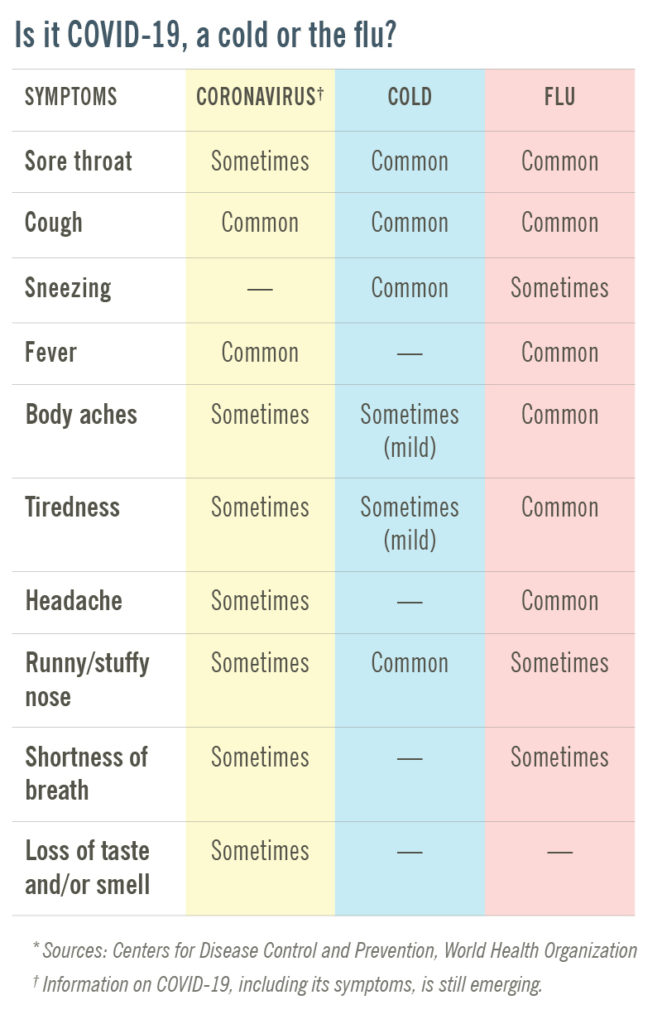
It is tempting to resort to over-the-counter remedies for a common cold or flu. But, rest is probably the best remedy. Moving around can only worsen the symptoms of a sore neck and make it worse. Also, it will help your body recover from the flu-like symptoms. Garlic is an amazing natural remedy for flu and cold. It boosts your immune system. Garlic is an excellent natural treatment for the flu and colds. Garlic has anti-inflammatory and fighting properties.
Chicken soup
Researchers from Nebraska investigated the effects of chicken stock on white blood cell activity, specifically the movement of neutrophils. The substance inhibited neutrophil migration, which may reduce symptoms of a common cold. Additionally, the soup decreased the activity of white cells in the upper trachea, which is where cold symptoms are most common. Although further research is needed to determine the effects of the soup, researchers believe that it has medicinal properties.
Honey
Honey is a popular treatment for flu and colds that is both tasty as well as effective. It can be taken as a beverage or added to warm water for soothing the throat and congestion. A teaspoon of honey mixed in a glass of water will help sooth cold and flu symptoms. The natural ingredients in honey have anti-inflammatory properties, so they can be effective in reducing the severity of cold symptoms. To enhance the effect of honey, you can also add 1 teaspoon cinnamon.
Garlic
You can also eat raw garlic. Both raw and cooked garlic can be used as cold and flu remedies. They have the power of improving the immune system, and can ease symptoms such as colds. Besides, proper rest and hydration will speed your recovery. Your immune system may also be boosted by taking a zinc supplement. Raw garlic is the best form of garlic supplementation. But, there is no scientific proof to support the effectiveness of garlic as a cold and flu remedy.

Vitamin C
Vitamin C has existed for decades. But it hasn’t always been a good cure for colds. LinusPauling, a Nobel Prize-winning scientist and chemist, suggested that high amounts of vitamin A could prevent colds. However, this claim was later disproved. Now, however, researchers are confident that vitamin C can help reduce the duration and frequency of colds. This is supported by evidence.
Hot showers
Hot showers are a great way to ease the symptoms of cold and flu. Humidity from hot showers enters the mouth and nose, thereby releasing mucus blockages and making you feel better. If you do not have a shower, try creating a mini sauna in your bathroom. You will feel much better after inhaling the steam.
Consume lots of fluids
Drinking plenty fluids for flu and cold remedies has several benefits. One, proper hydration can help the body use medications more efficiently, which will result in quicker relief. You should generally drink six to eight glasses daily for adults, but you should increase it if you experience symptoms. Another benefit is electrolyte-enhanced beverages, which replenish lost fluids and prevent symptoms from worsening.
Vitamin C can help reduce the time it takes to get a flu or cold.
A recent study has shown that vitamin C consumption can reduce the duration of a flu or cold by as much as 20%. However, the optimal vitamin C dosage has not yet been determined. There are not enough studies to prove a definitive dose-response relationship. Studies that used higher doses of vitamin A have shown results to be more effective than those using only 1 gram.

FAQ
What are the ten best foods to eat in America?
These are the 10 best foods to try:
-
Avocados
-
Berries
-
Broccoli
-
Cauliflower
-
Eggs
-
Fish
-
Grains
-
Nuts
-
Oats
-
Salmon
How often should I exercise?
For a healthy lifestyle, exercise is vital. However, there isn't a set amount of time you must spend working out. Finding something you enjoy is key. Stick with it.
If you are working out three times a weeks, aim to do 20-30 minute of moderate intensity. Moderate intensity means that your muscles will continue to work hard even after you finish. This type of workout burns around 300 calories.
For those who prefer to walk, you can go for 10-minute walks four times a week. Walking is low impact and easy on your joints.
You can also run for 15 minutes, three times per week. Running is a great way of burning calories and building muscle tone.
You can start slow if you're new to exercise. Begin by only doing 5 minutes of cardio five times per week. Gradually increase the amount of cardio you do until you reach your goal.
Is cold a sign of a weak immune response?
It's been said that there are two kinds of people in the world; those who love winter and those who hate it. But whether you love or hate it, you may find yourself wondering why you feel so lousy when it's cold out.
The truth is that our bodies are built to work best when it's warm. We evolved to thrive in hot environments because of the abundance of food resources.
We live in a very different environment than our ancestors. We spend more time indoors than ever before, and are often exposed both to cold and heat extremes.
This means that our bodies aren’t used to these extremes. This means that we feel tired, sluggish and even sick when we venture outside.
There are many ways to avoid these side effects. Keep your body hydrated. You can help flush toxins out of your body by drinking plenty of water.
Also, ensure you eat healthy food. Eating nutritious foods helps your body maintain its optimal temperature. This is particularly helpful for anyone who spends long periods of time inside.
Finally, consider taking a few minutes each morning to meditate. Meditation helps you relax your mind and body, which makes it easier to deal with stress and illness.
Here are 7 ways to live a healthy lifestyle.
-
Be healthy
-
Exercise regularly
-
Sleep well
-
Make sure to drink plenty of water.
-
Get enough sleep
-
Be happy
-
Smile often.
What's the best diet?
Many factors influence which diet is best for you. These include your age, gender and weight. You should also consider how much energy your exercise consumes, whether you like low-calorie or high-calorie foods, and what you enjoy in terms of eating fruits and veggies.
Intermittent fasting is a good option if you're trying to lose weight. Intermittent fasting allows you to consume only certain meals per day, instead of eating three large meals. You may find that this method works better for you than traditional diets that include daily calorie counts.
Studies have shown that intermittent fasting can improve insulin sensitivity and decrease inflammation. This could lead to improved blood sugar levels, and a lower risk of developing diabetes. Research also shows that intermittent fasting may increase fat loss and improve overall physique.
How to measure your body fat
A Body Fat Analyzer (BFA) is the best method to measure bodyfat. These devices can be used to measure body fat percentages in people who are trying to lose weight.
Is cold a sign of a weak immune response?
Cold causes a decrease in immune system strength. This is because white blood cells are less effective at fighting infection. But, cold makes you feel better. Your brain releases endorphins that reduce pain.
Statistics
- According to the Physical Activity Guidelines for Americans, we should strive for at least 150 minutes of moderate intensity activity each week (54Trusted Source Smoking, harmful use of drugs, and alcohol abuse can all seriously negatively affect your health. (healthline.com)
- The Dietary Guidelines for Americans recommend keeping added sugar intake below 10% of your daily calorie intake, while the World Health Organization recommends slashing added sugars to 5% or less of your daily calories for optimal health (59Trusted (healthline.com)
- WHO recommends consuming less than 5% of total energy intake for additional health benefits. (who.int)
- WHO recommends reducing saturated fats to less than 10% of total energy intake; reducing trans-fats to less than 1% of total energy intake; and replacing both saturated fats and trans-fats to unsaturated fats. (who.int)
External Links
How To
What does "vitamin" actually mean?
Vitamins are organic compounds naturally found in food. Vitamins help us absorb nutrients from foods we eat. Vitamins cannot be produced by the body. They must be acquired from food.
Two types of vitamins exist: water-soluble vitamin and fat-soluble vitamin. Water-soluble vitamins dissolve in water easily. You can find vitamin C,B1 or thiamine, B2 or riboflavin and B3 or niacin, B3/niacin, B6/pyridoxine, folic Acid, biotin and pantothenic Acid as examples. The liver and fatty tissues are home to fat-soluble vitamins. These include vitamin D, E and K, as well as beta carotene.
Vitamins can be classified according to biological activity. There are eight major groups of vitamins:
-
A - Vital for normal growth and maintaining good health.
-
C – essential for proper nerve function.
-
D - Essential for healthy teeth and bones.
-
E is necessary for good vision, reproduction.
-
K - essential for healthy muscles, nerves, and bones.
-
P – vital for building strong bones.
-
Q – aids digestion of iron and iron absorption
-
R - Required for red blood cell production
The recommended daily allowance (RDA) of vitamins varies depending on age, gender, and physical condition. The U.S. Food and Drug Administration, (FDA), sets the RDA value.
For adults 19 years and over, the RDA of vitamin A is 400mg per day. Pregnant mothers need 600 micrograms per days because it is vital for the development and growth of their baby. Children ages 1-8 require 900 micrograms per day. Infants below one year old require 700mg per day. But, between 9 months to 12 months, the amount drops to 500mg per day.
Children between the ages 1--18 years old who are overweight or obese require 800 micrograms per Day, while those who are overweight or obese need 1000 micrograms. To meet their nutritional needs, children underweight and obese require 1200 micrograms a day.
Children between 4 and 8 years old with anemia will need 2200 micrograms daily of vitamin C.
2000 micrograms is the minimum daily intake for adults over 50 years old to maintain good health. Due to their increased nutrient needs, pregnant and breastfeeding women need 3000 micrograms daily.
Adults over 70 require 1500 micrograms each day, since they lose around 10% of their muscle mass every decade.
Women who are pregnant and lactating need more nutrients than the RDA. Pregnant women require 4000 micrograms daily during pregnancy, and 2500 micrograms every day after birth. Breastfeeding mothers need 5000 mg per day when breastmilk is being produced.